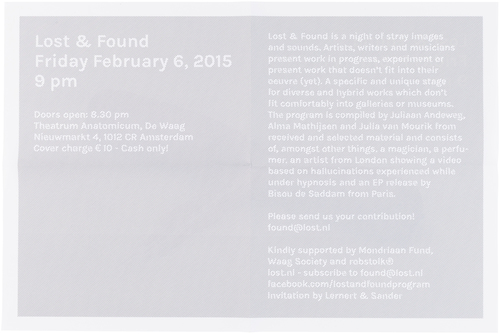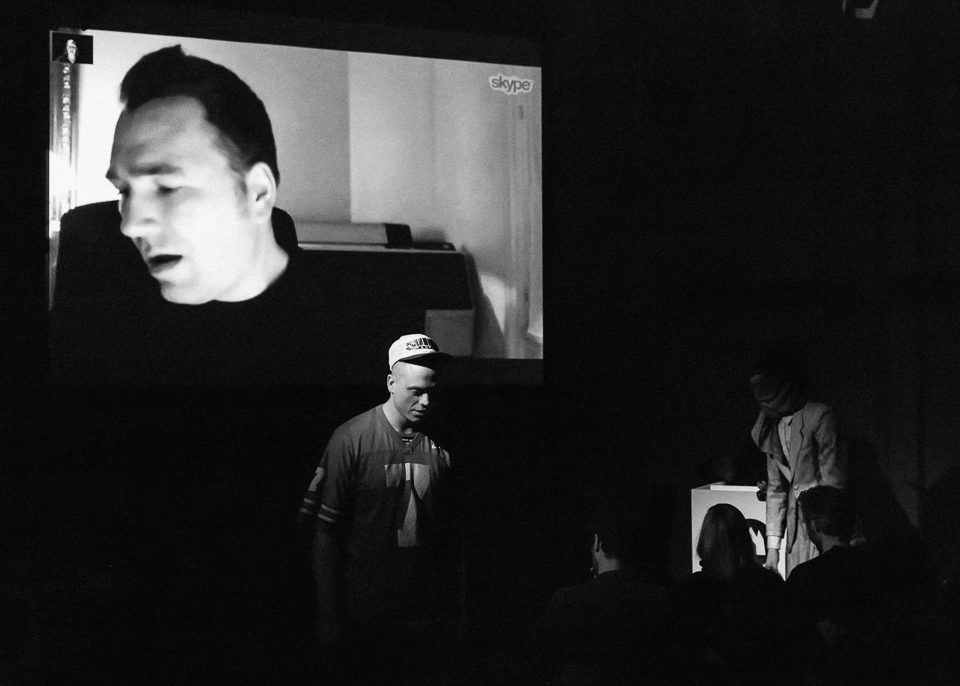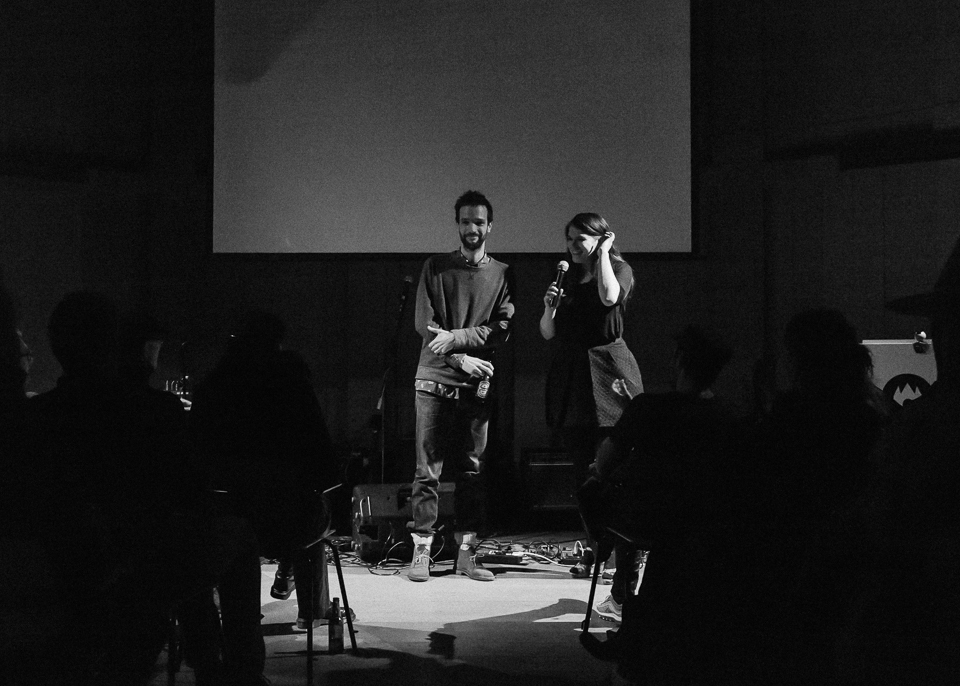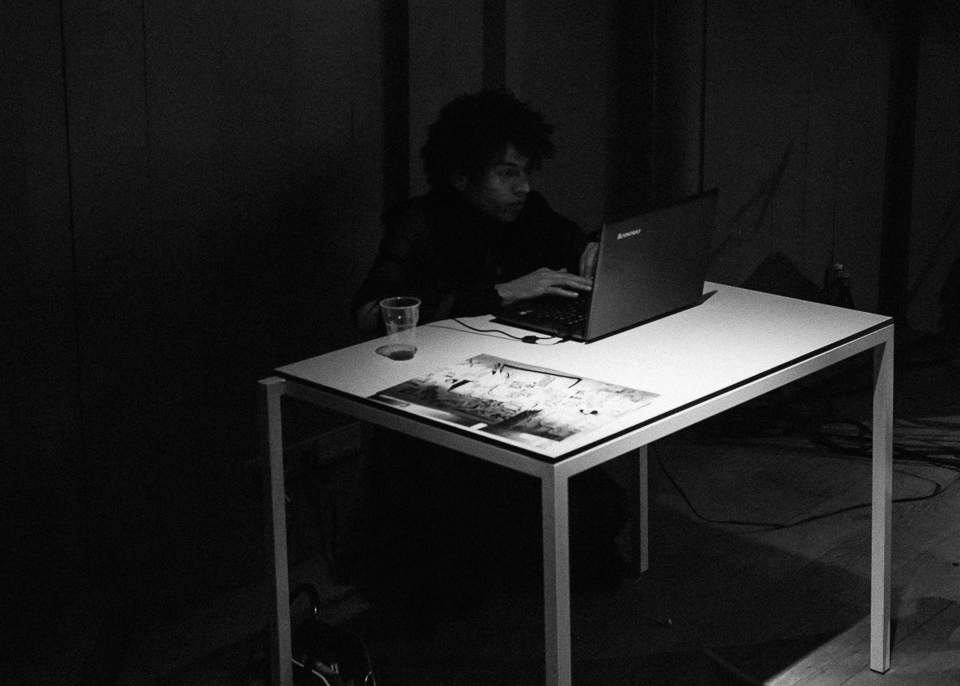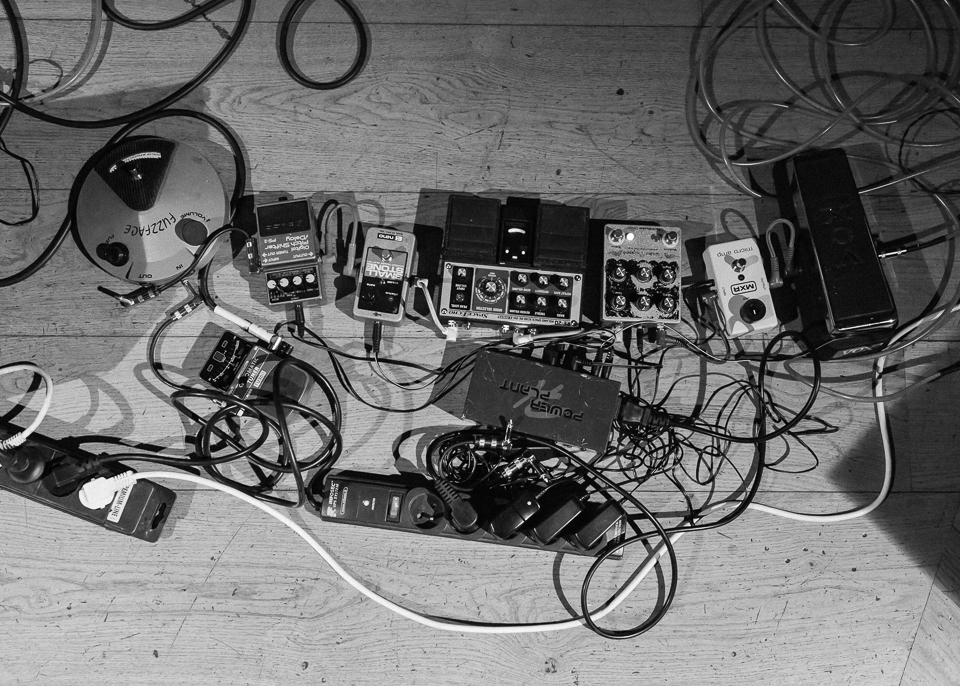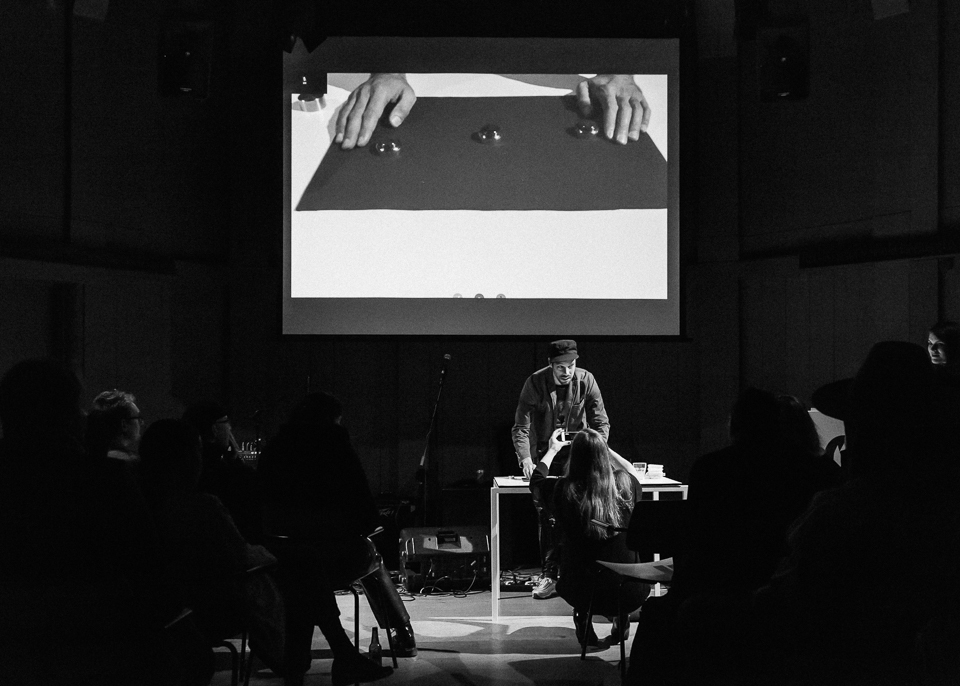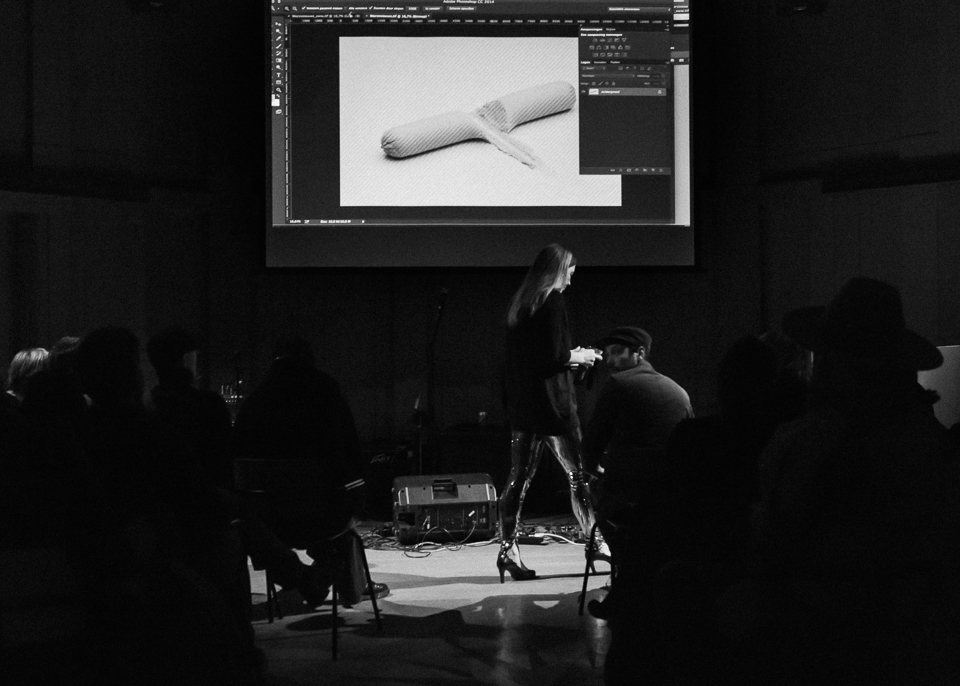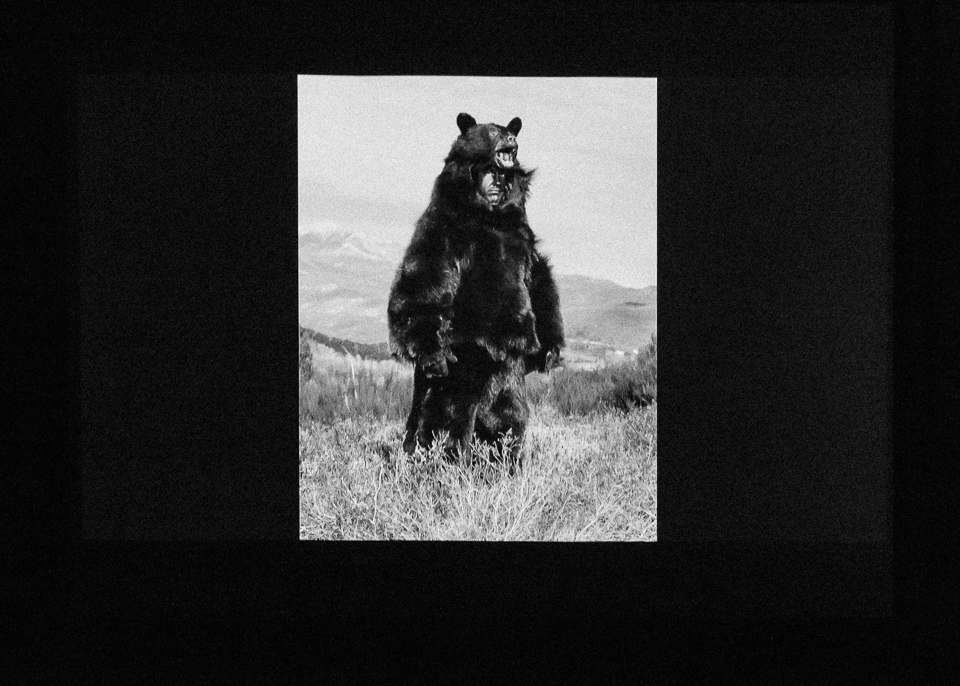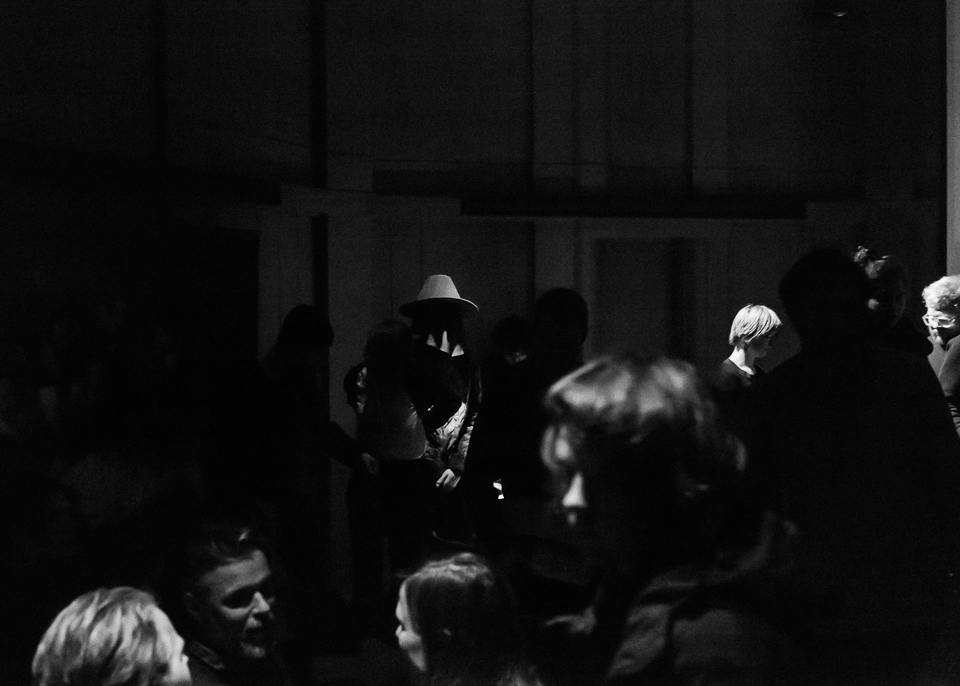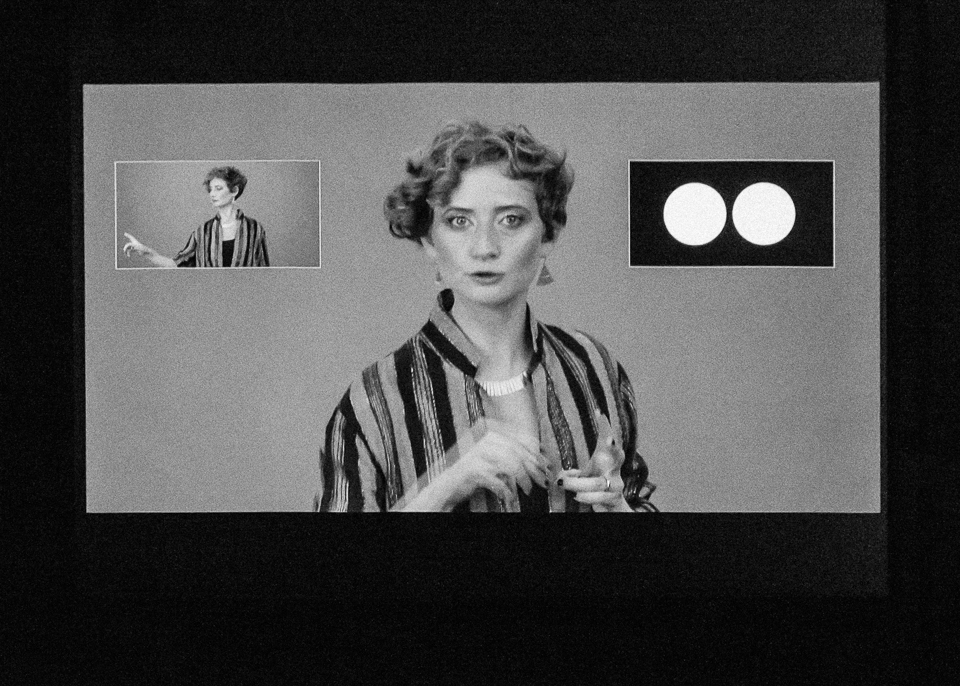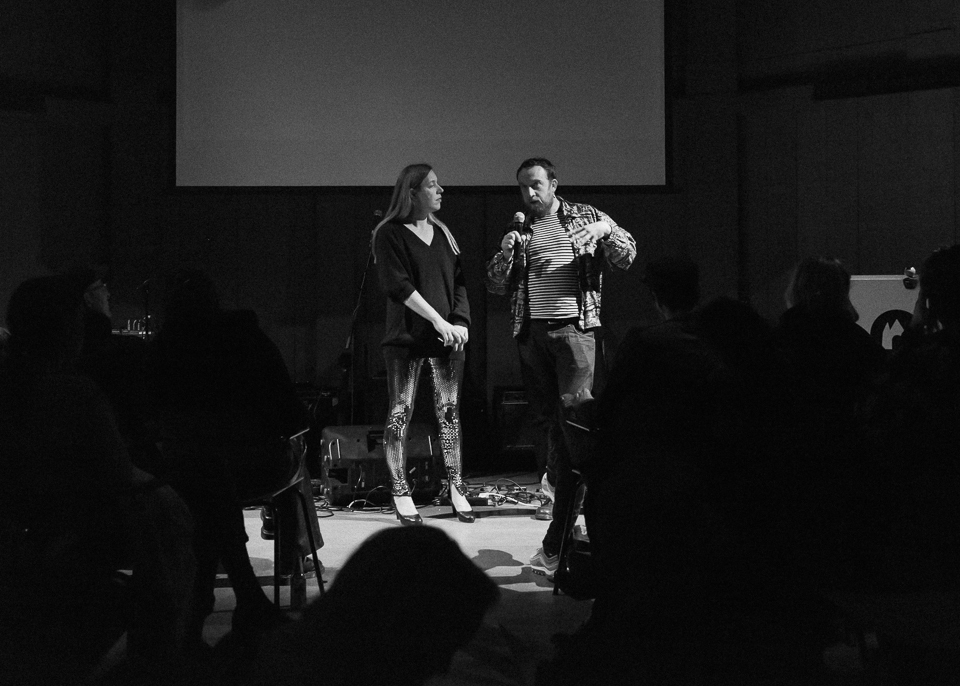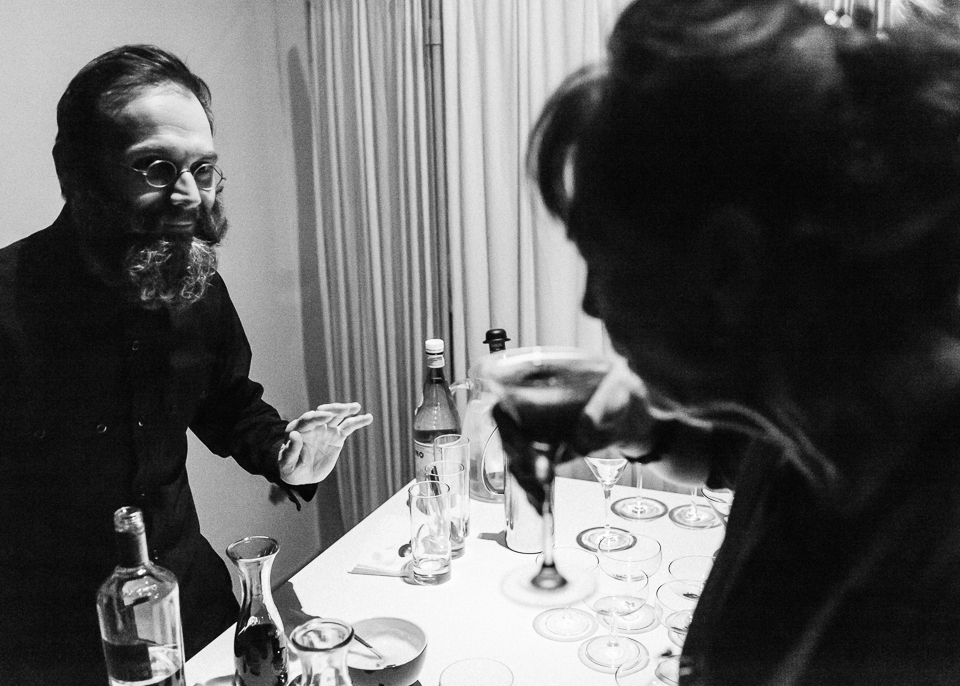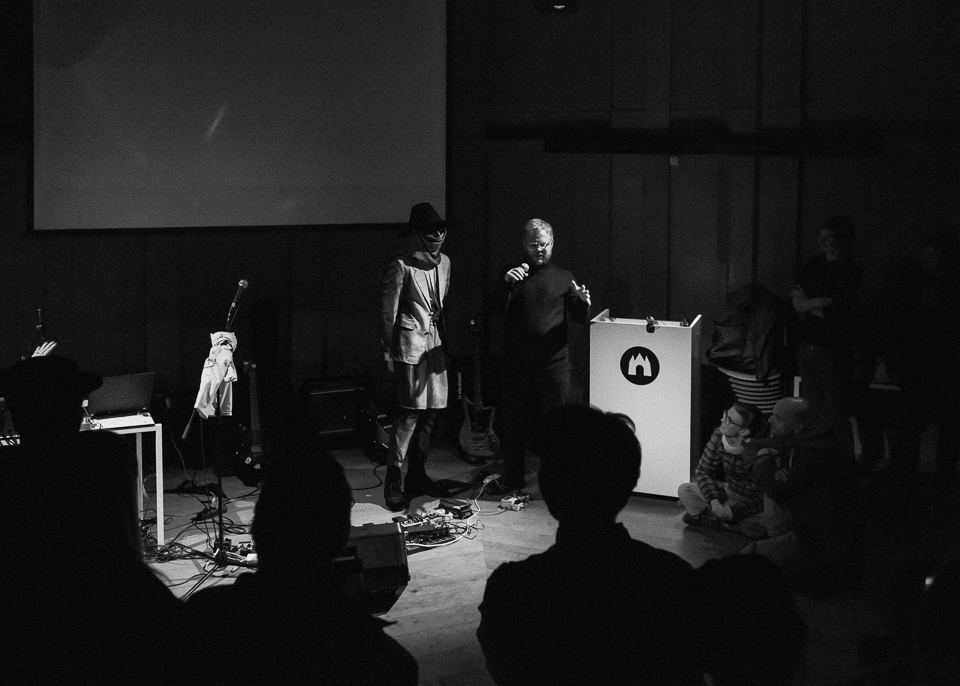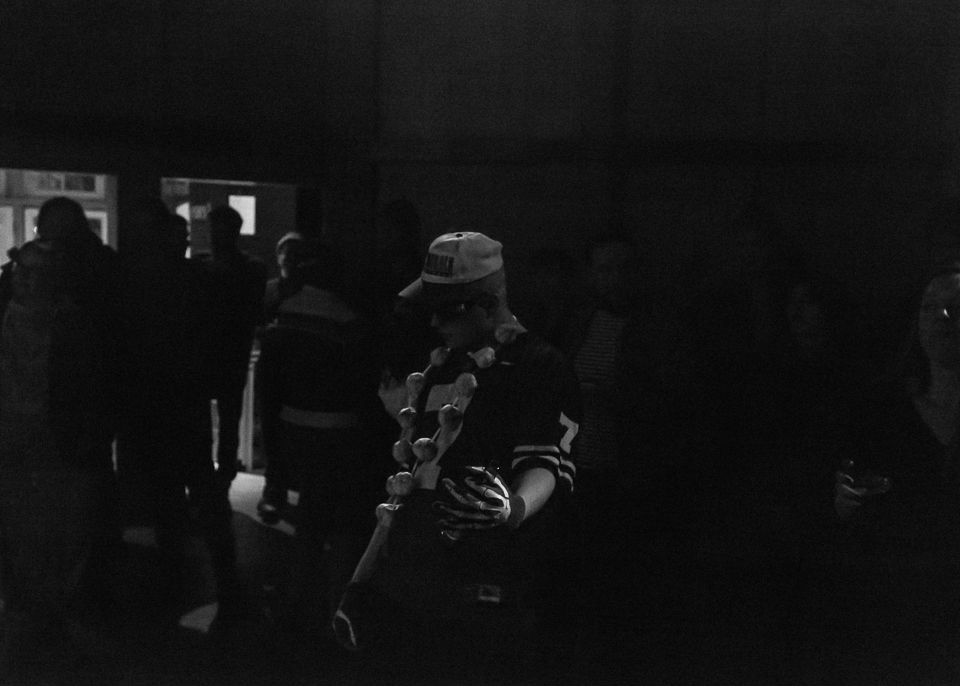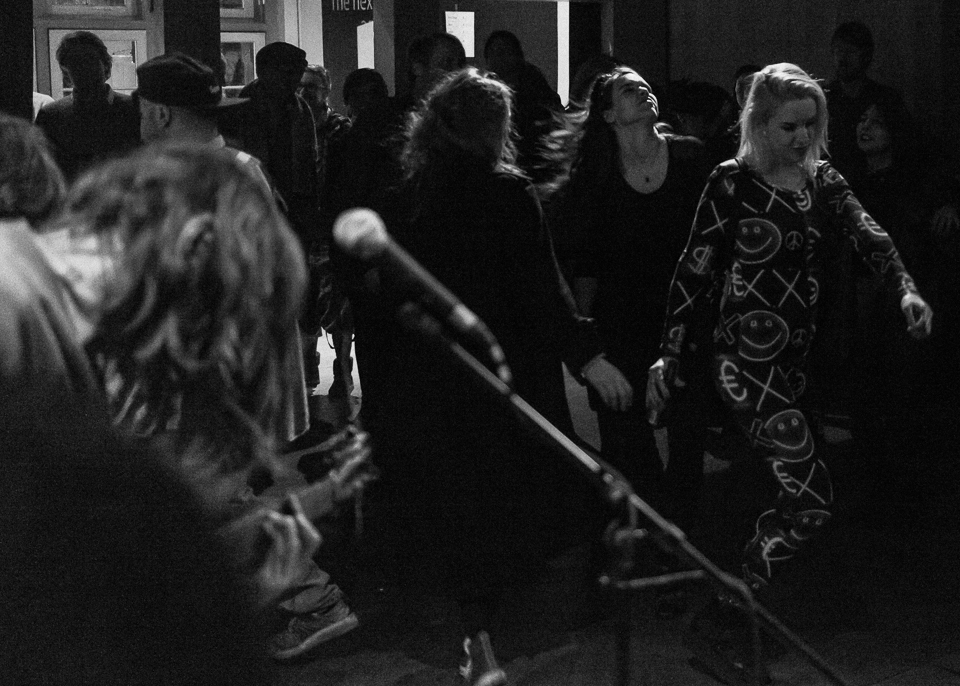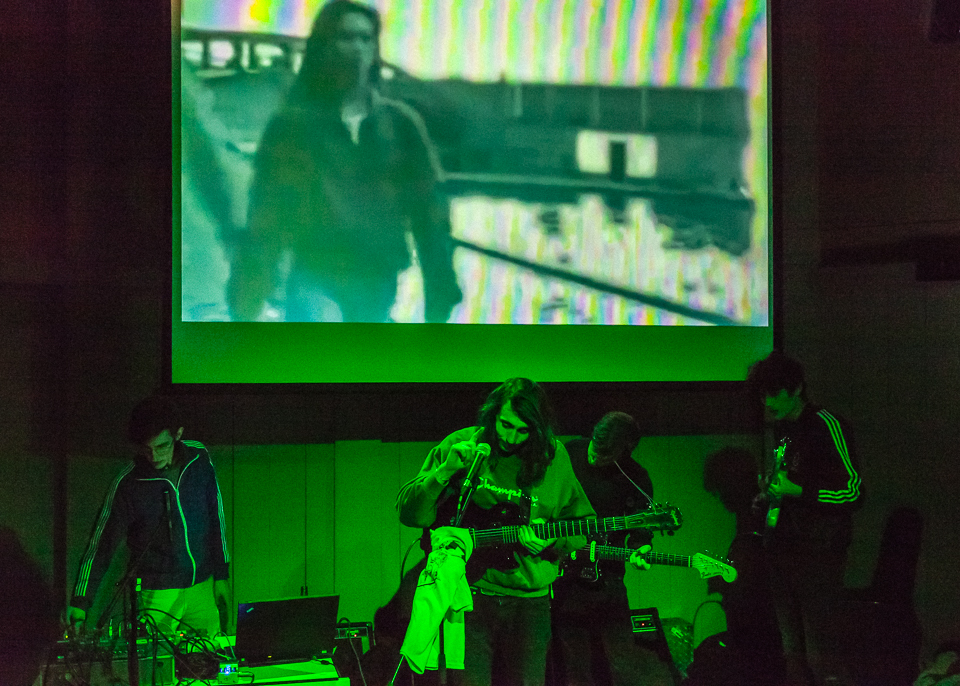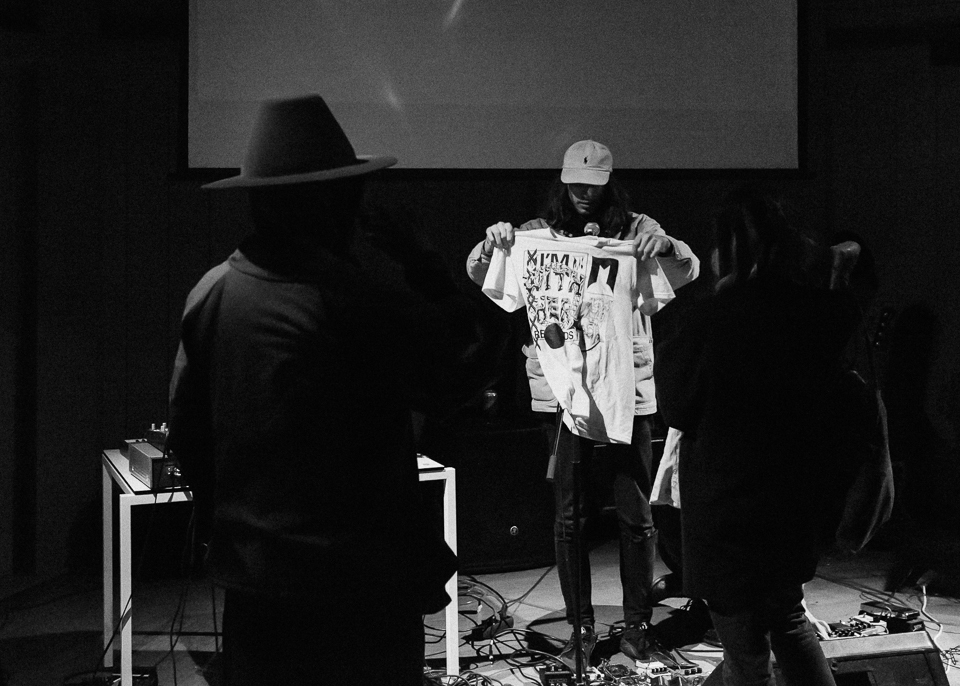Two days quickly passed and I was entering an apartment building in the Amsterdam-Oost neighborhood. Sitting at a dinner table covered in assorted artisanal cheeses and breads flanked by aluminum can fortresses of Palm and Amstel were a group of young and well-dressed Parisian urbanites that were providing the rhythmic element to the evenings program that I later learned were called Bisou de Saddam. We chitchatted for a bit and when I asked them to describe their sound the bassist chimed ‘electric jungle fuzz’. I this cohort to be convivial and effable, but I must apologize to this group of intrepid young bohemians as their names have devolved in my mind into a soup of eau’s, ean’s, aque’s, ierè’s, the most rudimentary of French sounds. At one point Andeweg turned the blaring music off, stood up and called the attention of the table as the indigo smoke of Gauloises cigarettes and hash joints encircled our heads.
‘Ok everyone, attention! Attention! Are you all ready, its time, let’s go! Don’t let the band smoke too much. Remember, you all have to be focused, this is a very important event!’
We looked at each other, nodding our heads in silent agreement, packed up our stuff and followed the leader toward the evenings soirée.
Approaching the Waag, you might get the impression that Amsterdam’s planners conveniently placed a quaint baby castle right in the heart of the city. It is only after you push open the teal iron cast doors of the Waag’s right tower that its deeply rooted and multifaceted history begins to emerge. Dating back to the 15th century, The Waag was originally connected to the defensive walls of Amsterdam and acted as a city gate, making it the oldest non-religious building in the city. At the top of a wooden spiral stair case lies the Theatrum Anatomicum, a finely crafted and conservatively decorated octagonal lecture hall where the Amsterdam Guild of Surgeons was allowed to perform dissections on dead convict’s bodies a few times a year for the viewing public. In 1632, Nicolaes Tulp, the City Anatomist at the time, commissioned a young Rembrandt to immortalize their equally fascinating and morbid pursuits in his now famous oil painting, The Anatomy lesson of Dr. Nicolaes Tulp, a copy of which hangs on one of the back walls.
As the band was checking their a sound, a wide-eyed women with straight and long light brown hair armed with high heals and silver sequenced slacks click-clacked toward me. She introduced herself as Julia van Mourik, one of the co-curators of Lost & Found. Quickly following her was the final part of the triumvirate of curators, Alma Mathijsen, a young lady with medium length, ash brown locks that donned a black blouse and matching tutu and pumps. After a bit of lollygagging on my part, Alma summoned the event organizers and artists for dinner, a veritable smorgasbord of Thai food from a local eatery down the road called Bird that was of the upmost quality. We quickly introduced ourselves as we wolfed down plate after plate of delectable eats, and though it was not officially part of the scheduled programming, the sublimity of the munchables cannot be overstated—the dinner was one of the best highlights of the evening, full stop.
Stuffed, I shimmied my way back upstairs and took a seat in the cozy theater, admiring the woodcut reliefs and the 87 coats of arms hanging from the octagonal copula far above my head. Van Mourik handed me a handsome four-folded event program which had what appeared to be a mound of watermelon-flavored cocaine compressed into the shape of a hotdog crudely bisected in half by what I hope was an equally delectable cherry-flavored credit card. I was told that before the scheduled acts that the design process behind this periodical would be deconstructed on a projector screen.
With van Mourik and Mathijsen as the dueling masters of ceremony for the evening, the first item on the agenda was a short Skype lecture with photographer Charles Fréger about his recently published Wilder Mann series that documents costumes used in pagan rituals practiced during the winter months throughout Europe in the present day. This ranged from the babugeri men of Bulgaria, whose flowing manes look like an upright Komondor sheepdog with an unusually elongated neck, to the Ursul din Palanca of Romania, a curious costume that resembles a skinned black bear with magenta cheerleader pom-pom’s for ear rings. The fact that these ancient and idiosyncratic customs have survived on the fringes of our increasingly secular western society is astounding to say the least, and I salute Fréger for taking the time to capture these rare glimpses into this nearly forgotten chapter of European history.
We all gave Fréger our regards and moved on to the next presentation, A short film by videographer Arnar Ásgeirsson about a train hopping adventure he took with three friends to Germany. One of the friends, Matthijs Diederiks, was present to give a short introduction to the piece and to answer any audience questions. He said that they were inspired to make the film after watching a movie about training hopping in the 50s in the United States. Before embarking on their journey everyone involved utilized special ‘immersion techniques’ for six months that were analogous to method acting in order to get the track mechanics and train conductors on their side.
What followed is what I would call a ‘raw’, home-movie style piece that begins with them sneaking onto the back of a brand new pickup truck on a cargo train in Amsterdam, wind in their hair, sun on their backs, with a bit of the romance flecking away as the train careened onward down the lonely railroad line. We saw vignettes of these young lads getting swilled on wine and beer and jumping on and off trains as they stopped at various unknown destinations, carrying along a meter long white coffin embossed with a cross and a deceased crocodile in tow. Some of the most powerful images came from the landscape itself, whose topology undulated and seemed to pulsate and breath in synchronicity with euro-house and trashy 80s pop that was blasting from their ancient boom box. The boys were jovial and up beet, notwithstanding their interaction with rail workers who appeared to condone their project, technically illegal though it might be. Near the end they jump off the train, the conductor perhaps realizing his stowaway passengers.
Up next was Rogier Roeters, a warm, down to earth Amsterdamer and part-time illusionist who preformed a series of tricks and revealed some, but not all of his trade secrets. He bounced from one trick to the next with van Mourik all the while streaming video form her iPhone to the projector screen behind Roeters so the audience could see his tricks from various angles so we ‘know’ he wasn’t cheating. He also gave us a brief history of magic and explained how there are very few new tricks nowadays, with most sourced from street entertainers who hustle money from the unknowing masses with keen slight of hand and misdirection. I was particularly impressed with his final feat where in the process of demonstrating how he ‘magically’ transported a handkerchief inside an egg that turns out to be hollow he somehow transformed the hollow egg into a real one, cracking it into a glass as the whole audience leaped up from their seats to hoot and clap in uproarious approval.
The illusionist was followed by video artist Paul Simon Richards, who screened a short film titled ∆ HS. FS. ZWNBS. N-C. BS., an esoteric acronym that represents the coding required to place a gap between two lines of text on a website. The mild-mannered Richards walked up to the stage wearing navy blue denim jeans and what appeared to be a faux Versace pattern jumper, quietly explaining that the film was an attempt to recreate investigations into his own imagination under the effects of clinical hypnosis. It opens with a 3D rendering of man wearing a leopard print hat and matching jacket drifting about in a black void. It quickly cuts to the same man dancing about in black room and then zips to a close-up of a face of an attractive Italian women in front of a green screen with gunmetal eyes the size of dinner plates and flowing golden locks as she commences a hypnotic séance, describing a ear ring and suggesting that the viewer focus in on it, going deeper and deeper until its molecular composition becomes revealed.
The audiences’ eyes began to lull when we were brought back to (sur)reality with the image of two white spheres slowly attracting and repulsing each other accompanied by a piercing sound that can only be compared to emergency signals transmitted during television broadcasts. This phantasmagorical film jumps back and forth between monologues from our mysterious belladonna, the man, and abstract animated sequences that bring to mind aspects of Lemon Jelly’s seminal album and accompanying film ’64 to ’95 combined with the stream-of-conscious ravings from the likes of James Joyce. Though some viewers might find it unsettling, I believe there is a method to Richards’ madness. The film is cohesive and doesn’t come off as completely disjointed and provocative for its own sake. It is something that has to be seen to be understood, if that is actually possible; words really don’t give it justice, when it becomes publically available take a gander if you dare.
As the lights came up everyone was visibly ready for the 15-minute intermission to tank up on booze and smoke to their lungs content before the mini fashion show by Bastian Visch and the closing concert by Bisou de Saddam. The bar included bespoke mixed drinks concocted by Laurent-David Garnier and if his haute couture sounding name didn’t give it away by now, these baroque cocktails were phenomenal, hell, they even tasted expensive. From what I could gather from the few sips I had, Garnier was able to fuse gin with perfume and almonds without being overtly turgid.
I went outside with the brave few who were willing to bear the paper thin and frigidly cold air to smoke a few cigarettes. Sadly, smoking inside historic wooden buildings like the Waag is not permitted, for shame! I found myself in the accompaniment of my French compatriots and few strangers who seemed to be smoking double time to compensate for their lack of nicotine intake in the past hour and a half as plums of smoke froze over their heads like unfinished speech bubbles. Eventually we were ordered back inside to recommence the festivities, which signaled our young rockers to inhale their remaining cigarettes in large, speedy gulps. I wasn’t sure, but it felt like they were intentionally holding their breath to extract as much nicotine and tar as possible to keep them going till the end of the evening.
The penultimate event was a mini fashion show by Bastian Visch. There was no catwalk per say, as Visch had dressed three male models before the event and had them walking around and talking to all the guests. The first model had a breathlessly constructed jumper covered in an intricate quilting technique that ran from top to the bottom. The upper two-thirds was a turquoise green that was interjected diagonally by venetian red in the bottom third, with matching pants, velvet combat boots, and kind of cloth hanging from the front of the pants that gave it the appearance of a skirt. On his head was a similarly colored, brimmed rabbit skin hat with a red cloth sewed on the inside that completely obscured the model’s face. The second model wore a amber yellow “meta-draped” hoodie with similar color pants and cloth, dark brown suede combat boots, and a same style hat as the previous model but without any material obscuring his soft features and ice blue eyes. The final model wore a more traditional cobalt colored blazer, pants, black dress shoes, and a hat with a cloth that obscured his face, but in a more asymmetrical cut compared to the first. When asked to describe his creative process, he said that he utilized digital photography and manipulation to imprint imagery on the clothing to accentuate the shadows and contours of light on the folds and creases.
With the completion of the lectures and screenings, van Mourik and Mathijsen kindly asked the guests to remove all the chairs from the hall to make way for the dancing and cavorting, and we obliged them. Bisou de Saddam took to the stage to impart their particular take on acid-infused beach rock, “electric jungle fuzz” if you will. While I felt a bit of melancholy because I had to cut my night short and head back to my hometown of Rotterdam, I couldn’t help but imagine Nicolaes Tulp’s ghost peering through the ages from the Rembrandt print at the rear of the lecture hall, cracking a smile as a room that once housed scenes from the dead had become a celebration of the life. Putting on my winter jacket, I took a final sip from my perfumed cocktail and proceeded to wander onward into the night. With a few kilos of Thai food resting in my gullet and a mouth tasting like it had just been healthy glazed with a few spritzes of Chanel No. 5, I could not help but crack a smile too.
Editors note:
Following the accusation of rape, sexual assault, violence and stalking in NRC Handelsblad against Juliaan Andeweg, we publish here practical information with help for victims of sexual violence. Silence is inextricably linked to sexual violence. It is important to speak: Sexual Assault Center

